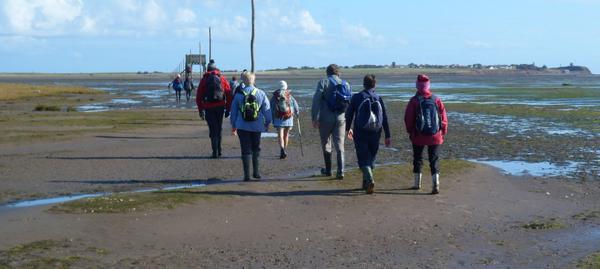[ad_1]
As one of five long distance Pilgrim Ways currently under development in Scotland, the Forth to Farne Way will take modern-day pilgrims along pathways and through places linked to Christianity’s earliest days in Scotland.
Several of the ancient Celtic saints are connected to places along the Forth to Farne Way including St Baldred, St Cuthbert, St Aidan and St Ebba.
Lord Wilson of Tillyorn, Patron of the Scottish Pilgrim Routes Forum and former Lord High Commissioner of the Church of Scotland, will formally open the new route at a service in St Mary’s Parish Church, Whitekirk.
Rev Joanne Evans-Boiten, Minister of Athelstaneford, Whitekirk and Tyninghame, who initiated the effort to develop the new route, said Whitekirk is one of many sites along the route that attracted pilgrims in the late Middle Ages.
She added: “Thousands of people came to Whitekirk because of a very famous holy well. That is why we have such a large church in such a small place.
“The story is that Agnes Countess of Dunbar had sustained injuries defending Dunbar castle when it was under siege. She visited a hermit living near Whitekirk and he told her to go to the holy well and drink the water.
“After visiting the well the Countess was healed and she went on to put up a chapel here that became famous throughout Europe. We have a record of the story written by one of the pilgrims who visited here and who later in his life became Pope Pius II.
“After the Reformation people changed their ideas about pilgrimages and holy places so Whitekirk was no longer considered an important place to visit. Sadly we don’t now know where the well was. We have looked but so far no-one has managed to find it. Maybe it will be rediscovered in the future.”
In medieval times pilgrims travelled the coastal route from Lindisfarne to St Andrews crossing the Firth of Forth by ferry from North Berwick.
The 72-mile pilgrim route follows parts of three well-marked designated footpaths: the John Muir Way, and the Berwickshire and Northumberland coastal paths.
A steering group of local volunteers has identified 11 stages that vary from 2 miles to 13 miles where they hope to site waymarkers and support services.
Currently chaired by Jimmy McGuinnes, the group has also produced a leaflet about the route and a booklet that tells the stories of the saints.
Nick Cooke, secretary of the Scottish Pilgrim Routes Forum SCIO praised the volunteers who have been working to develop the Forth to Farne Way for the last three years.
He added: “The next stage will be to develop waymarking and interpretation to tell the stories of these special places as well as provide accommodation for pilgrim walkers making this journey.”
Among the many places of interest along the route are: St Abbs harbours, the Scottish Seabird Centre, Preston Mill, Fast Castle, Lindisfarne causeway and Priory and St Andrews Kirk in North Berwick.
[ad_2]
Source link


